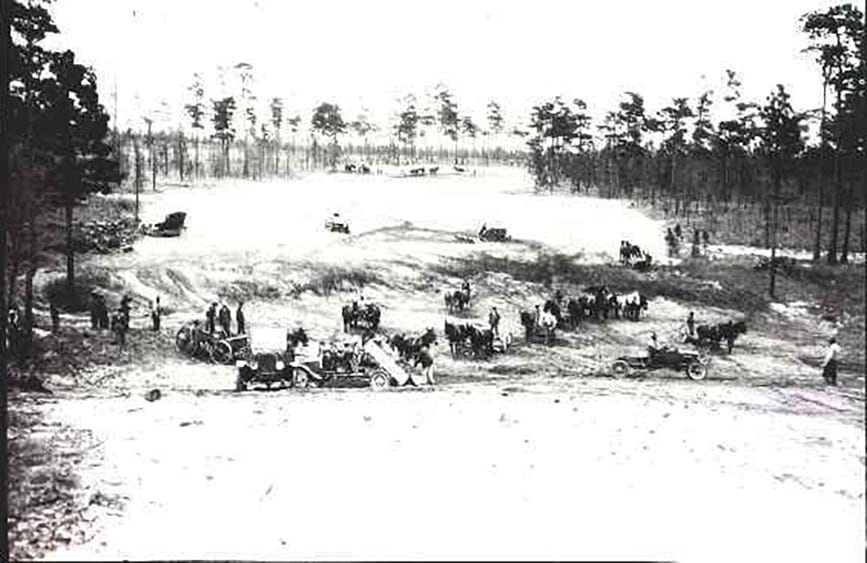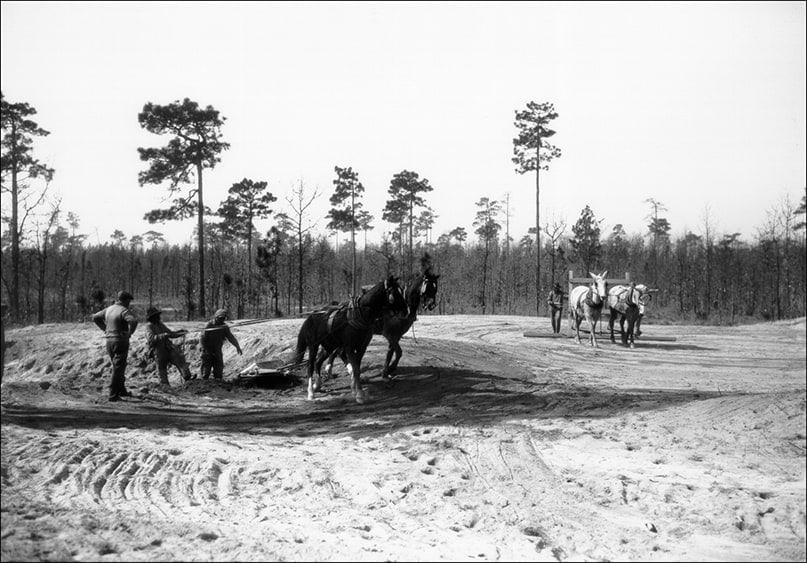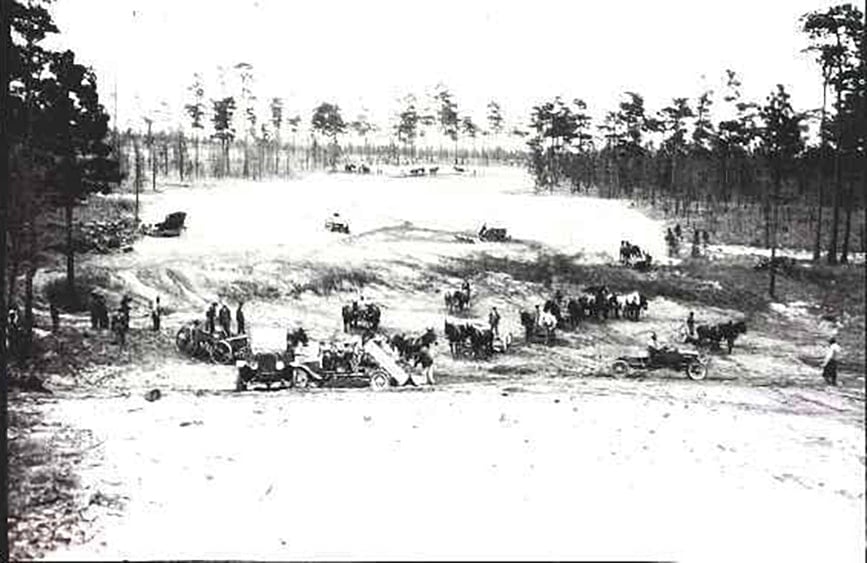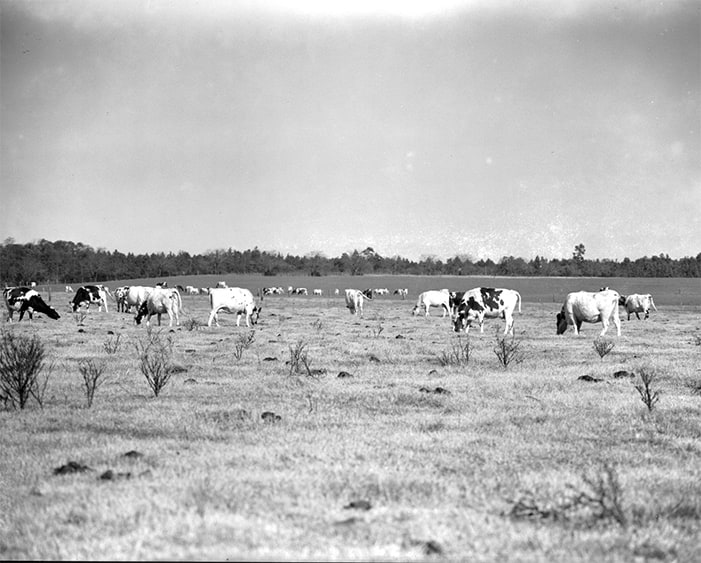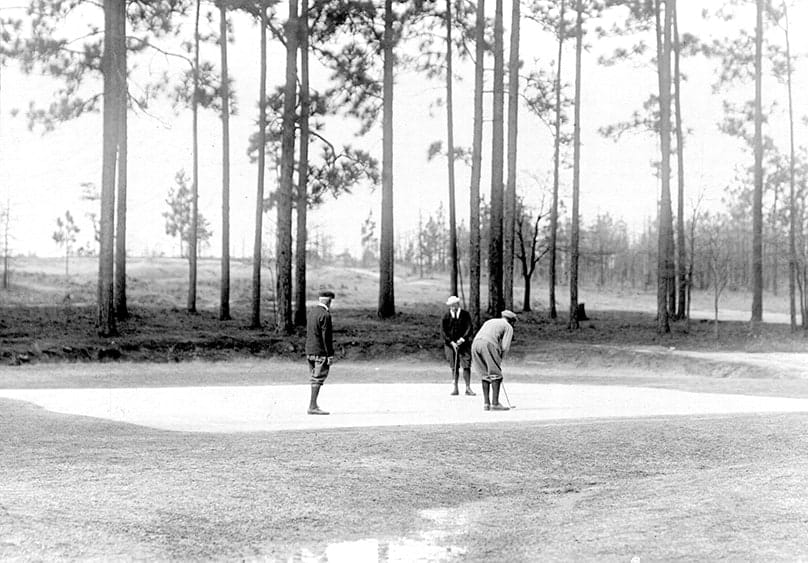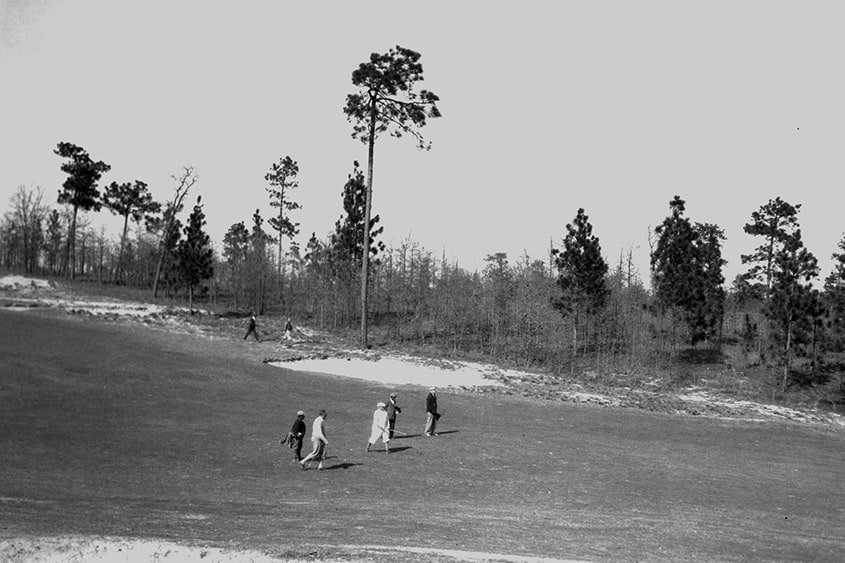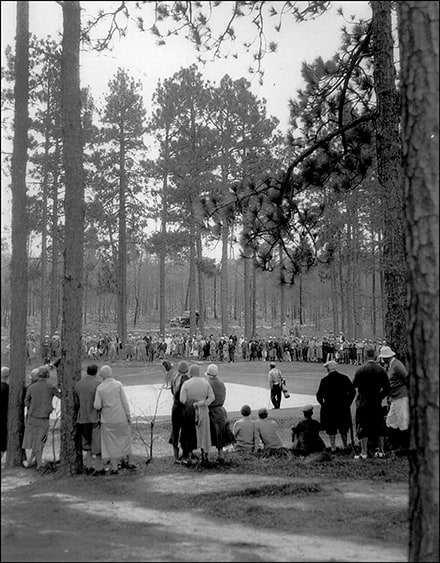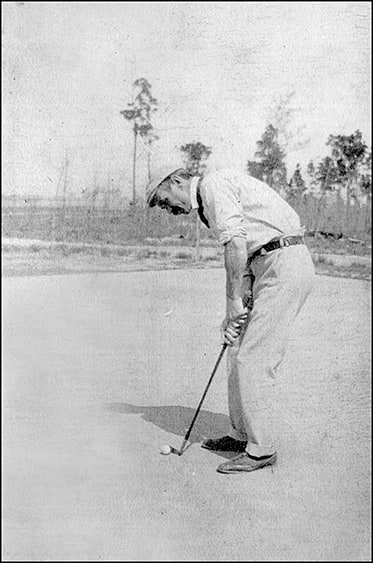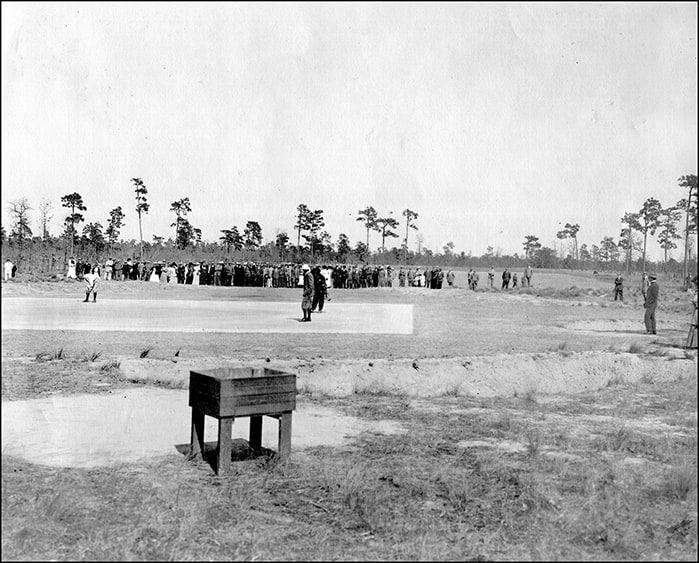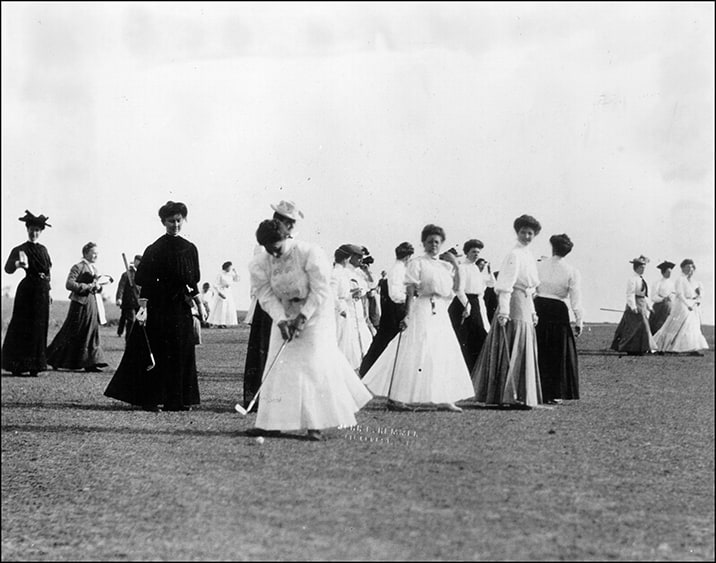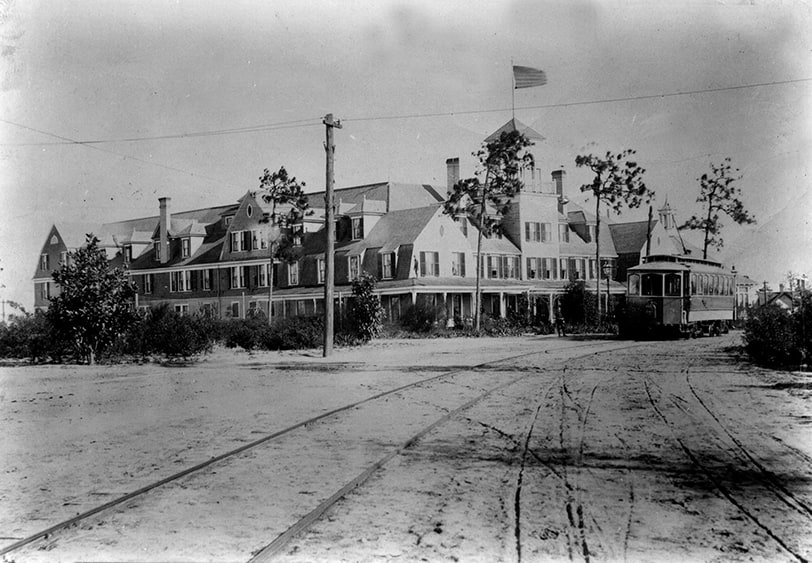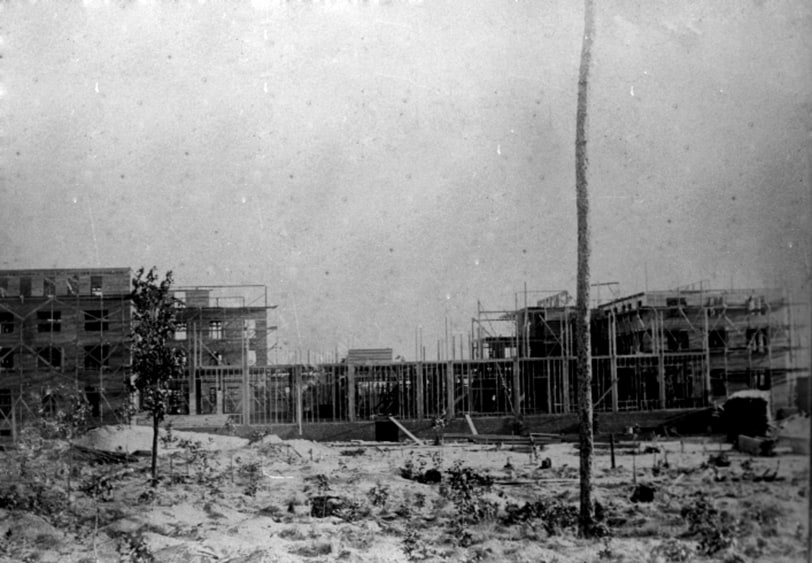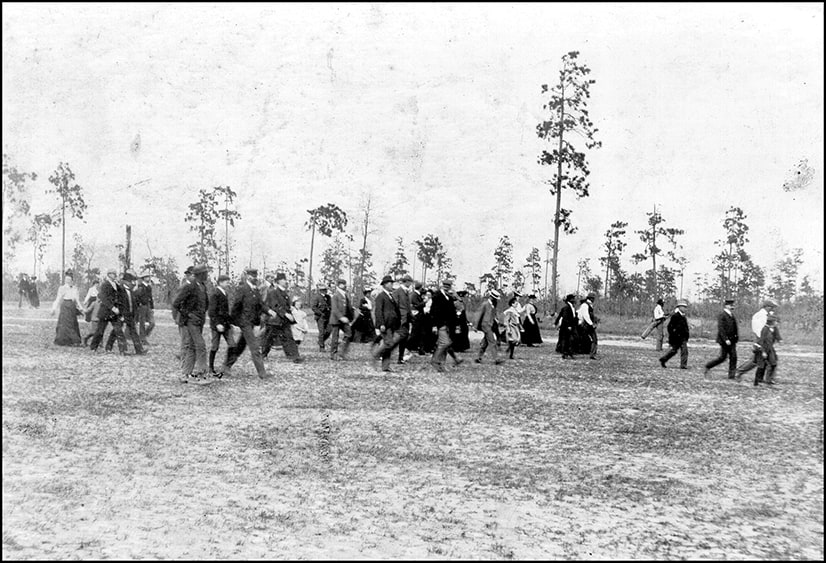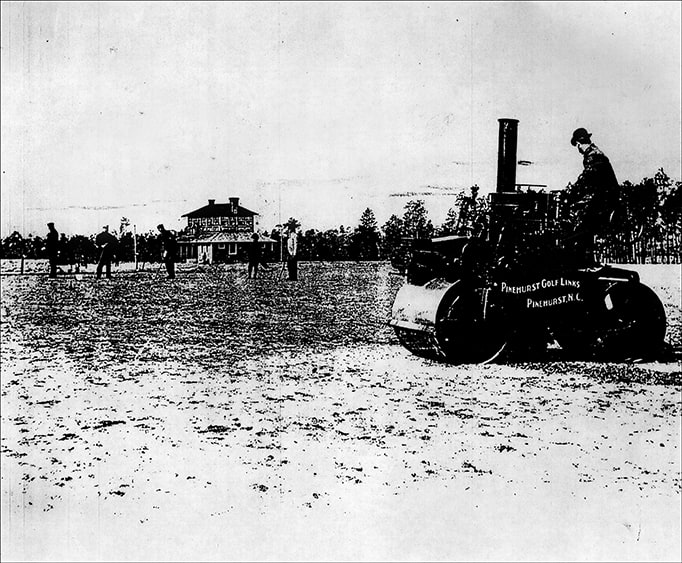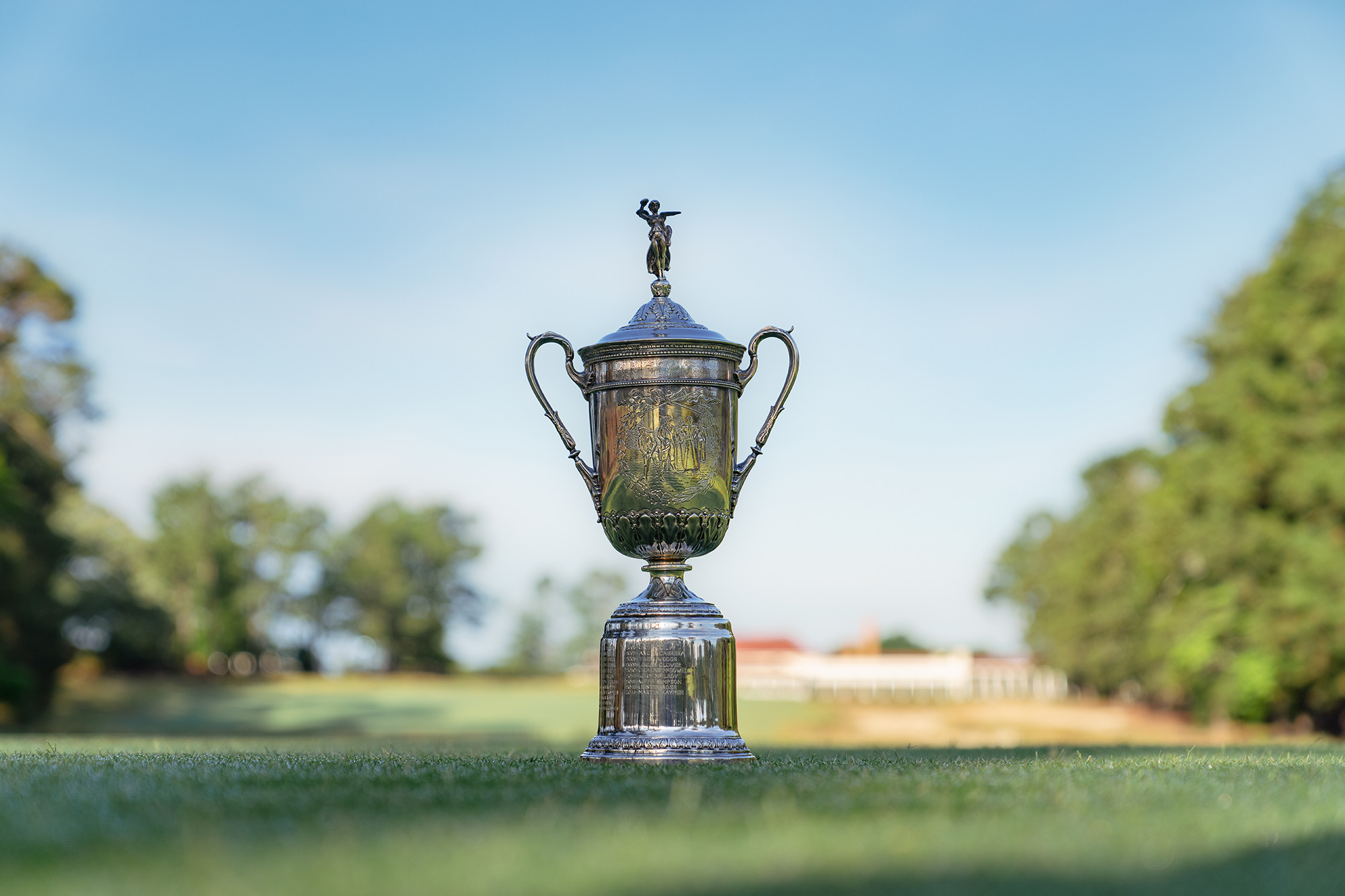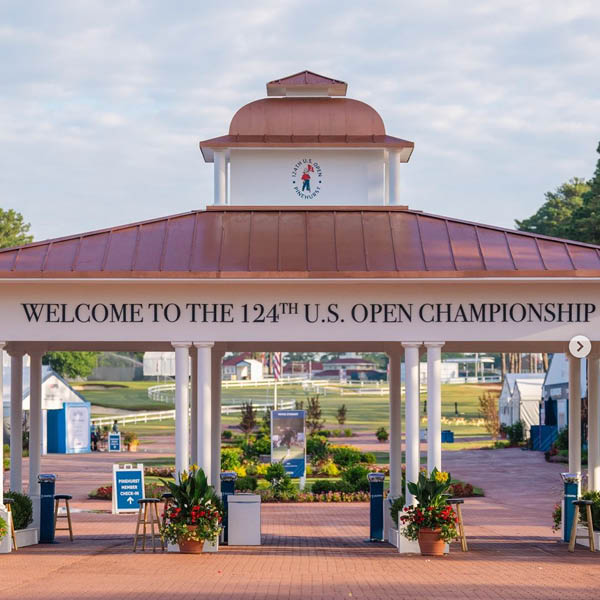Many locals thought Tufts a fool for his purchase, but the astute businessman sold his thriving soda fountain company on the idea of a health retreat – far away from the cares of the world. From the very beginning, Pinehurst was designed as a philanthropic gesture by Tufts, as a place for middle-class Americans to recuperate from the ailments of the time. Most believed those suffering from the respiratory illnesses as a result of the Industrial Revolution could be cured by the “pine ozone” only found in the region. Tufts’ idea was to create a New England-style village, with walkways and year-round greenery.
By the first year, Tufts had directed completion of a general store, dairy farm, boarding house, more than 20 cottages and the Holly Inn, which opened Dec. 31, 1895. The Carolina Hotel hosted its first guests in 1901. It immediately served as the center of all activity at Pinehurst, surrounded by lush grounds, perfect for enjoying the warmth of the day.
Recreation and gracious accommodations were premier features of Tufts’ health resort. Riding, hunting, polo, lawn bowling, bicycling and archery were popular in Pinehurst’s early days; many remain so today. Tennis was one of the first planned recreational activities at Pinehurst, with two courts on the original blueprints for the Holly Inn lawns.


